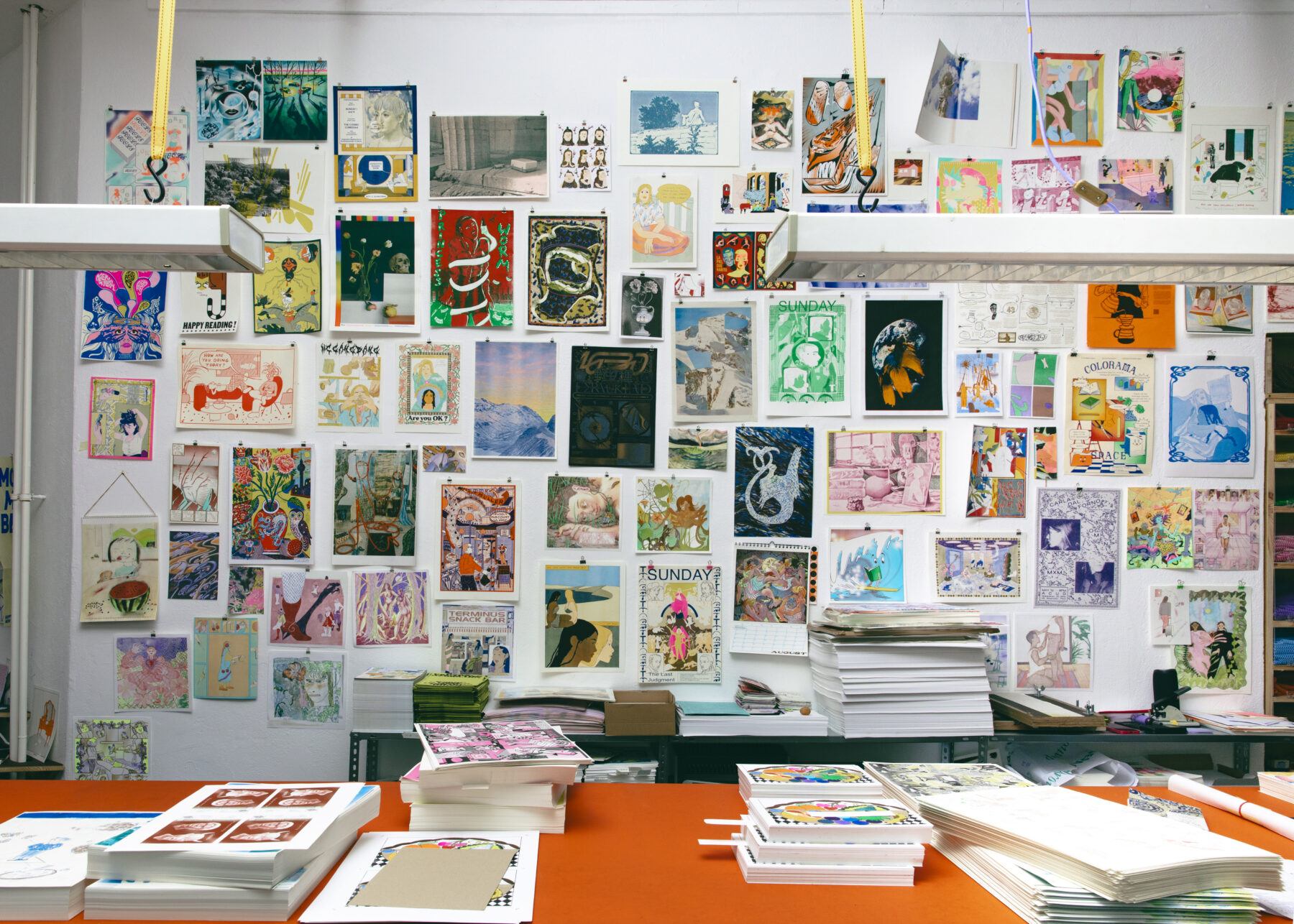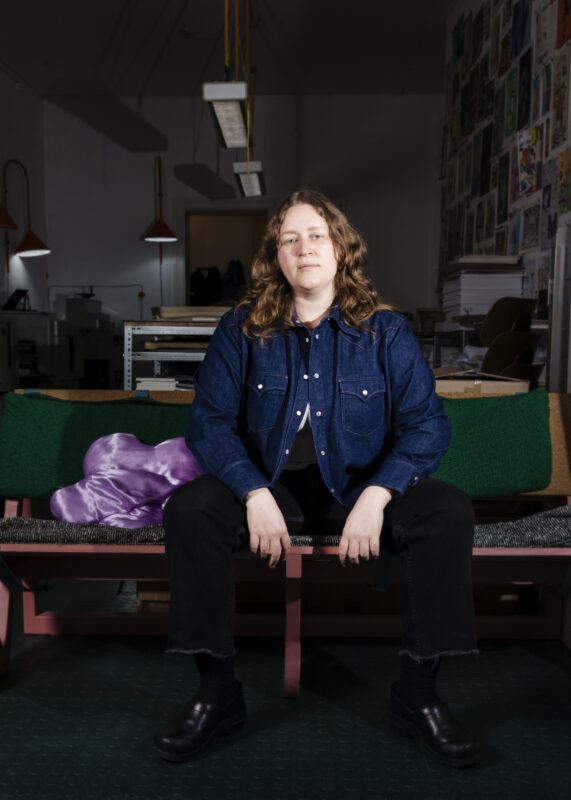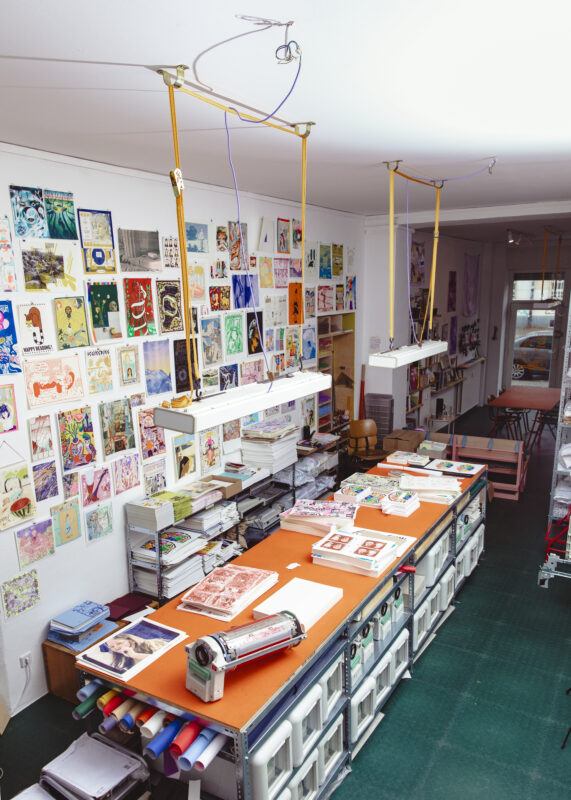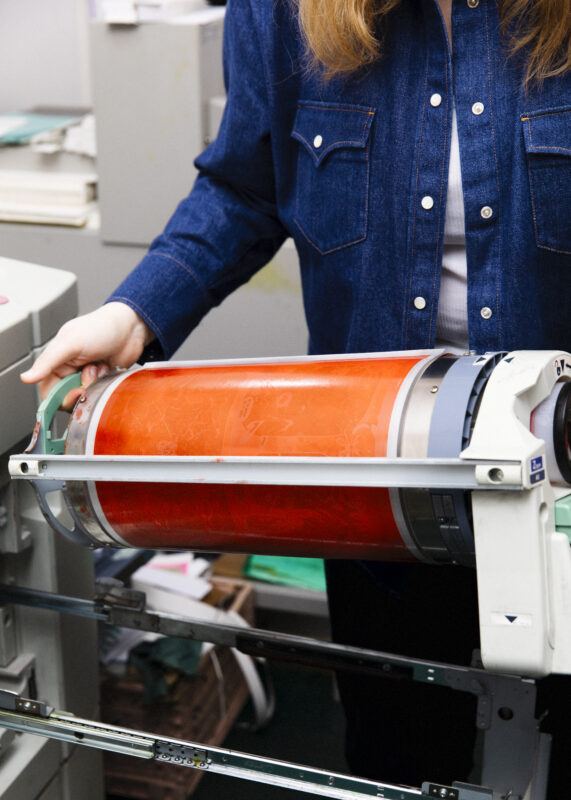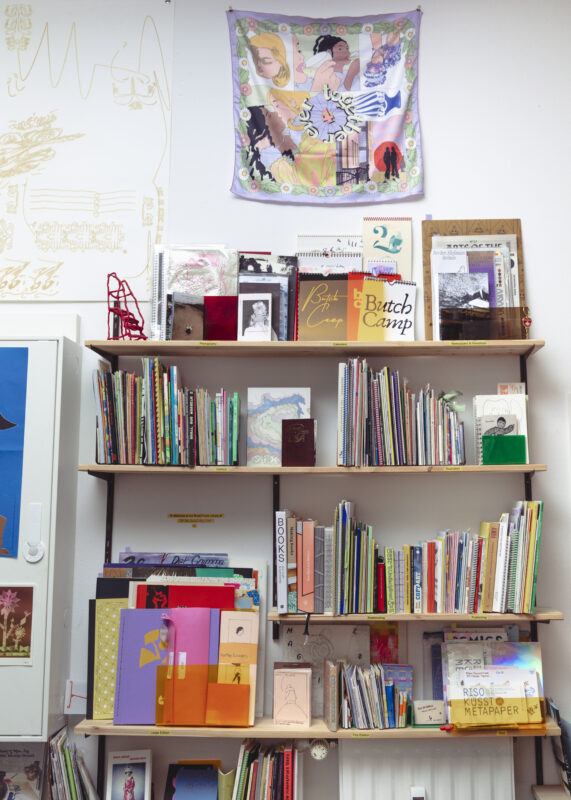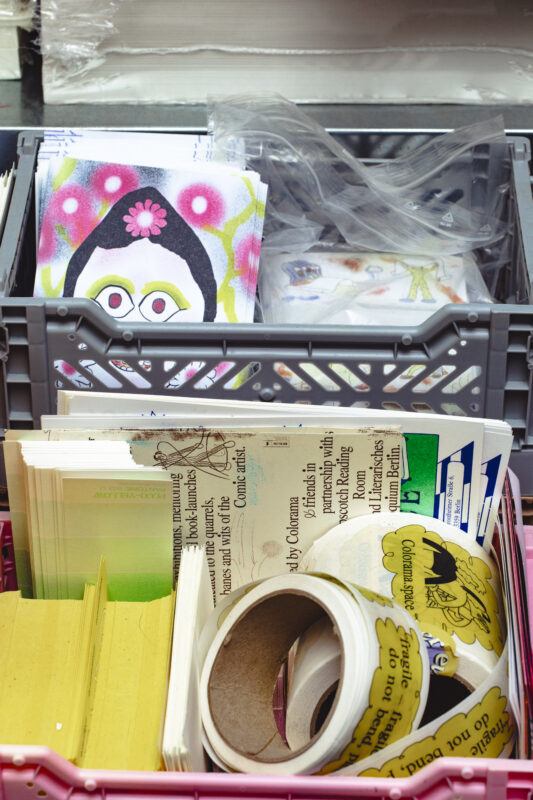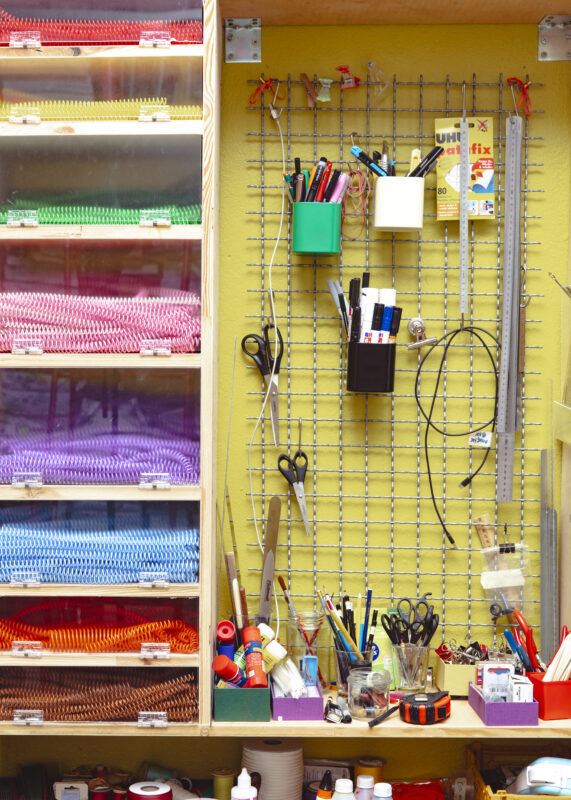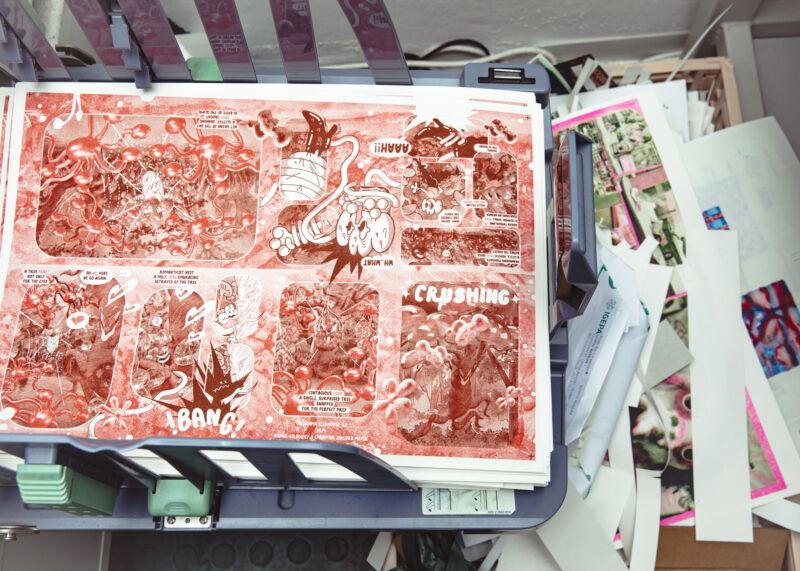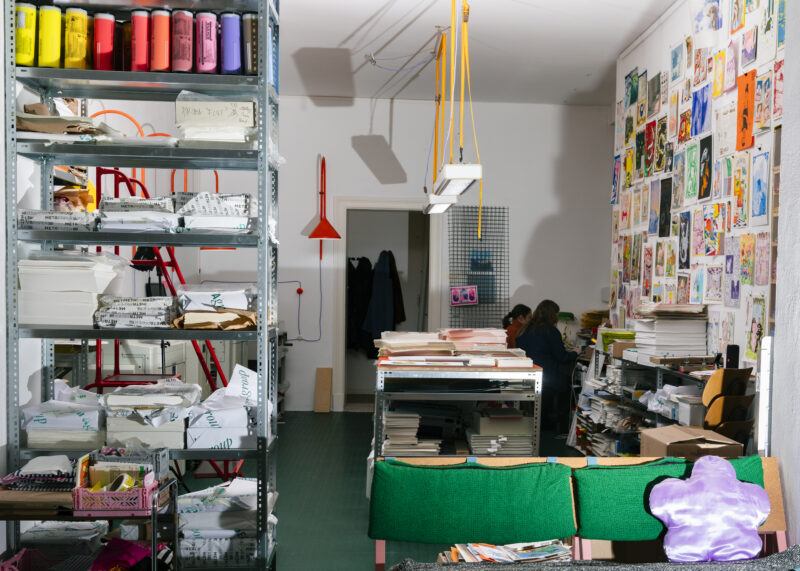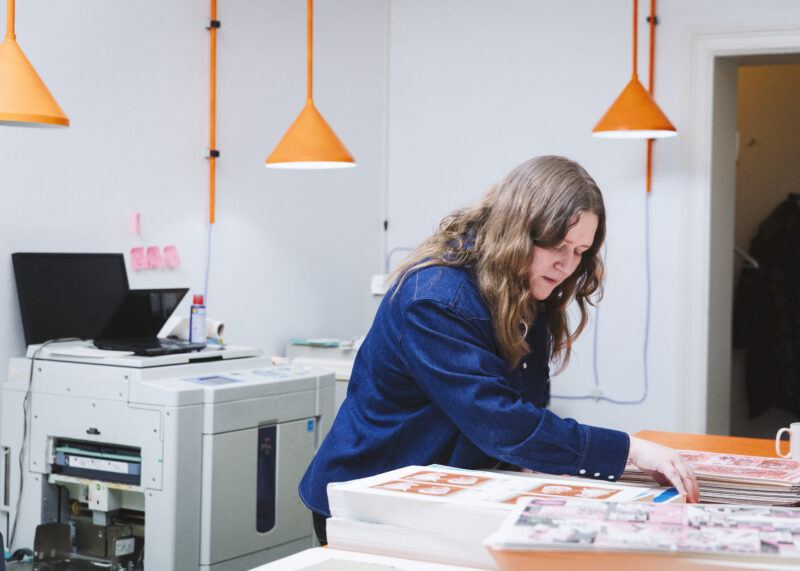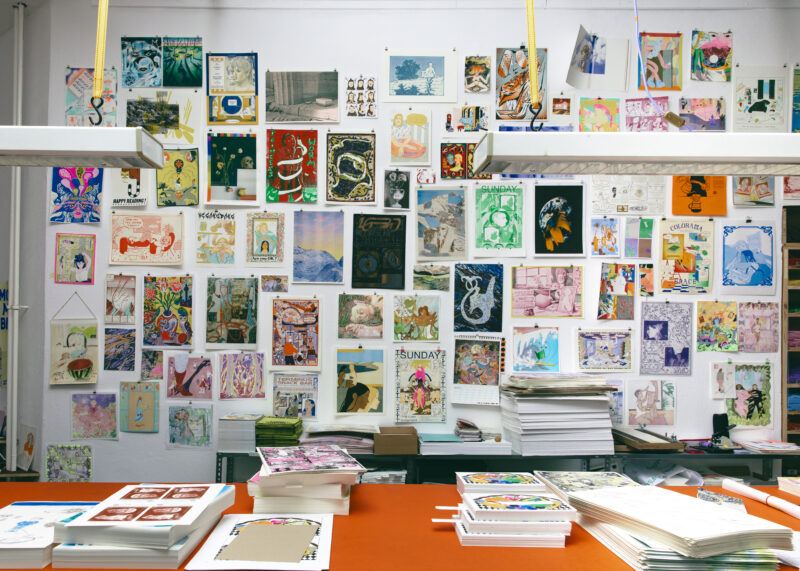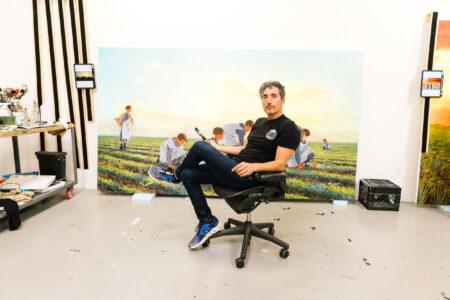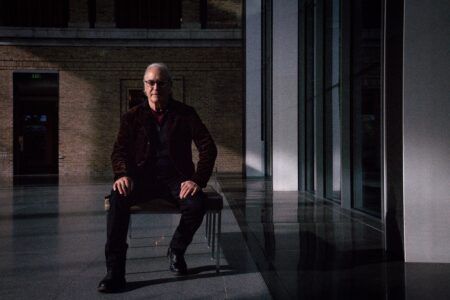Britina Cheng – How did you get into comics?
Johanna Maierksi – I was interested in risograph printing initially because I wanted to print comics for me and my friends. My dad was a Donaldist, so I grew up with Donald Duck comics. That’s had a big impact on me—from storytelling, to humor, to appreciating different kinds of line work. Later as a teenager, I discovered there’s this whole world of alternative and experimental comics.
Comics were initially a really big part of my publishing; I wanted to be primarily a comics publisher. And after going through so many book fairs and getting to know so many people, I realized in the past years that I’m really drawn to auto-theoretical and auto-fictional work and writing. Slowly, I’ve been moving more towards art books or experimental comic books, as well as text-based publications. If you would have asked me four years ago, I would have said that I’m a comics publisher. Now, I would probably say something else. But it’s probably not the last time I would change that, it keeps changing.
Can you briefly describe Colorama and how it came to be?
Colorama was founded as a publishing house and a riso printing studio. And throughout the years, it became more of a platform to learn about publishing, self-publishing, printing, and bookbinding. It has turned into an educational space. We focus more on how to share the resources that we have, whether that be the machines or our knowledge and skills.
How do you find the work you want to publish? Do you seek out artists or do they come to you?
It’s a network that keeps on growing. In the beginning, I contacted people and I tried to get in touch with people that I admired. Slowly, artists started coming to me and asking if I would publish their work. After publishing certain people that I really admire, all of a sudden, I had the courage to ask people that I wouldn’t have even dared to ask before.
At this point, it’s a mix. Usually, I work with people that I have connected with beforehand, whether we developed a friendship or an interest in each other’s work. It very rarely happens that someone just sends me a submission. It’s important to have a mutual understanding and a level of trust before I make a book with someone. For me, making a book is more interesting if I can also be involved as an editor. The artistic part of my practice is being able to edit and curate the content together, to develop the content with the artists. For that, I always need a baseline of trust and appreciation.
I know Colorama has like a few projects going on. Can you tell me about Clubhouse Week?
Clubhouse Week started out as a one-week residency program in 2017 for international comic artists to come to Berlin and work on a book. I’d print it, and then we’d launch the book right after. The process took about seven or eight days; it was very short. Over the years, though, the project became a bit bigger. We got more resources and time and it turned into a two-and-a-half to three-week residency. We now have more resources to pay them for the travel and for their artistic contribution. And we have now a team who’s printing the book, it’s not just me.
We also started an event series, Publishing as Collective Practice, in parallel to the Clubhouse residency. As part of this, we host a summer school that’s dedicated to collectives of marginalized perspectives in Berlin. Last year, we did both the Clubhouse residency and the summer school and the event series at the same time. It was too much. So I’ve decided we will do it biannually, doing each every other year.
For Publishing as Collective Practice, what kind of collectives have you worked with?
We have membership programs for individuals with low income, which is directed to queer people, non-binary people, and women. With this membership, we assist them in self-publishing and printing their projects.
For the summer school, we have different kinds of collectives applying. Last year, we had a workshop for artists with disabilities who applied, then we had the Black Student Union of a university here applying, and we had a collective of care leavers. The collectives are often people who basically do volunteer social work for the city without getting actual recognition for it. We think that they’re really important for the social fabric of the city, and so we want to share our resources with them.
This is probably my favorite program at the moment. It’s a project I’m really proud of, because it really condenses a lot of things that are important for us. It demonstrates the things that we’ve learned throughout the years and what Colorama stands for at this point in time.
Is there something important to you about physical media and printed material?
I have a personal affinity to it. I need different parts of my brain to be stimulated to be satisfied. I like to do things with my hands where I can conceptualize, strategize, and oversee something. So making books checks all of these boxes. With printed media, there’s a tangibility to it that helps connect people. At this point, I see the books that I make travel really far because these publications end up in bookshops all over the world, like a small zine shop in Manila or in Taiwan.
I do believe though that there are limits or restrictions to it, like reaching smaller countries that are not in this Western zone of publishing. But I’m more and more thinking about not just optimizing my own strategies of distribution, but thinking about how this circle closes.
You will be tabling at the New York Art Book Fair. How do you prepare for a book fair?
You have to figure out how to get your books there. Either you take them in your suitcase—that’s what I started out doing. Or you ship your books to the venue, which is what I do now. And then you just arrive. There’s a lot of improvisation involved because you never know what’s going to happen, like if you’re really going to be able to use nails or if you just have to use tape. There are a few publishers who are prepared and who have already planned everything about the table. But I’m always arriving and improvising. This year, I made the decision that I don’t want to improvise, and I want to plan it. But I know that once I arrive there, it will be a little bit of chaos.
Have you seen any changes in book fairs?
Yes, especially two years ago, when the last time the fair happened, it was very interesting because after three years of the pandemic, all these people emerged that I had never seen before. A lot of people were actually quite young. And I was really kind of blown away and impressed by the work they put out. I found it really inspiring.
Especially the individual publishers, they have an incredible amount of creativity and ideas. That’s always what I seek out if I go to fairs; I’m always trying to see what new publishers are doing. I’m really looking forward to seeing all those people again. I don’t know any other field in the art world where people are so generous with sharing resources and knowledge with each other; no one’s really gatekeeping.
Something that really drew me to bookmaking is that a lot of people work in this trial and error process. You take the ideas you have seriously, but you’re not too precious about everything that you’re doing. You’re just putting yourself out there and sharing your ideas, and being met with kindness and openness. That’s a romantic version of this, of course, but I think this is really what drew me in—I thought, “Oh, I have never seen a community like this.” And then, “I really, really want to be part of this.“
Good luck with all the preparations. Are you very busy?
Yes. I’m trying to be ahead of the game.

